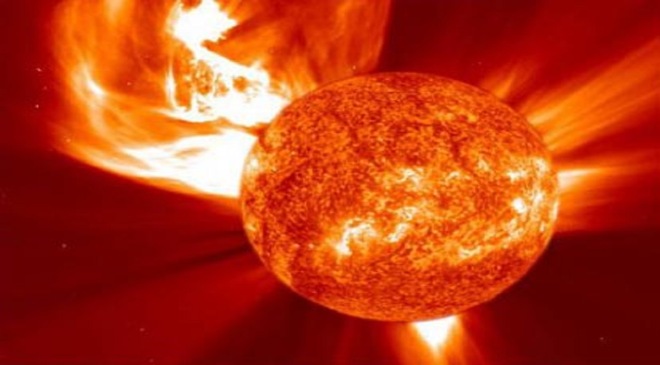The weekend passed without any solar activity, but things are about to change. The highly unstable sunspot, AR3311, which was responsible for an X-class solar flare eruption last week that resulted in radio blackouts on Earth, can again explode to a terrifying effect. Unlike last time, right now the sunspot is in full Earth view and any eruptions will be geoeffective. This means a stronger ultraviolet radiation impact, which means a wider radio blackout, and a more powerful solar storm event. But just how devastating can the event be? Let us take a look.
Read More: How to check eligibility of Ayushman Bharat insurance scheme on Paytm app
As per a report by SpaceWeather.com, ?Unstable sunspot AR3311 has a ‘beta-gamma-delta’ magnetic field that harbors energy for strong solar flares. NOAA forecasters say there is a 75% chance of M-class flares and a 30% chance of X-flares?. It is also not out of the question that multiple simultaneous eruptions take place, which can further complicate matters.
Sunspot feared to explode
We have not seen such a big sunspot harboring so much magnetic flux in a couple of months. However, the last such sunspot exploded multiple times before facing the Earth and did not explode while it remained geoeffective. But chances of similar luck are low this time around.
Read More: Petrol, Diesel Fresh Prices Announced Today; Check Fuel Rates in Your City on May 23
If the sunspot does explode and blasts an X-class solar flare, the resultant coronal mass ejection (CME) that escapes into space could be large enough to trigger even a G5-class geomagnetic storm. Such storms hitting the Earth can damage satellites, disrupt GPS, mobile networks, and internet connectivity, cause power grid failure, and even impact ground-based electronics.
Read More: Start Exchanging Rs 2,000 Notes From Tomorrow: Check Process, Exchange Limit And Other Details
NOAA’s GOES-16 satellite in solar storm prediction
GOES-16, formerly known as GOES-R before reaching geostationary orbit, is the first of the GOES-R series of Geostationary Operational Environmental Satellites operated by NASA and the National Oceanic and Atmospheric Administration. It was launched on November 19, 2016, and became operational on December 18, 2017. GOES-16 is located in geostationary orbit over the Atlantic Ocean and provides continuous imagery and atmospheric measurements of Earth’s Western Hemisphere. It also carries a lightning mapper, which can detect both cloud-to-cloud and cloud-to-ground lightning. GOES-16 is a vital tool for weather forecasting, climate monitoring, and space weather prediction.





































